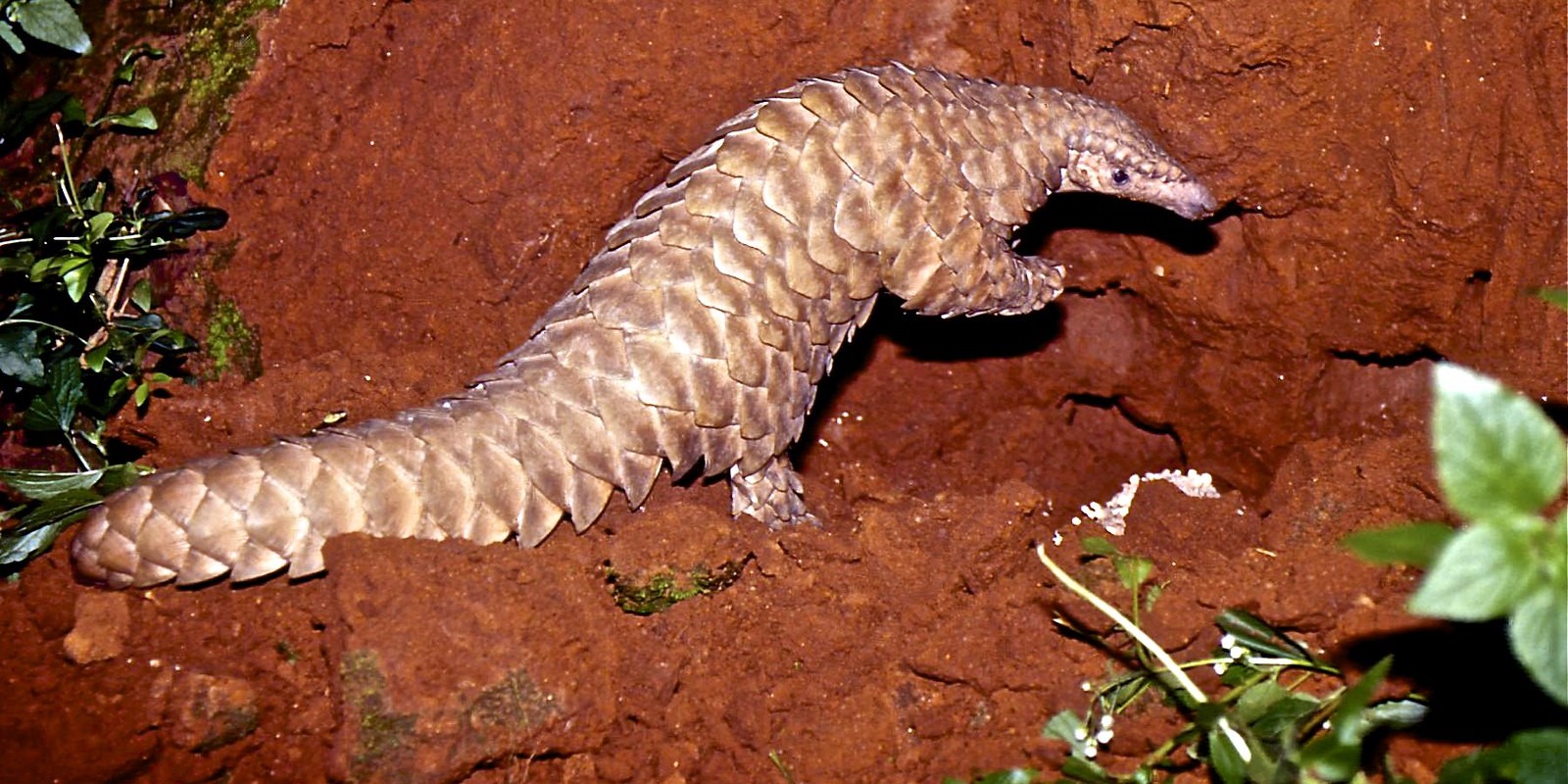According to a report by TRAFFIC published on 17 February, over 1,200 Pangolins were illegally traded during 2018-2022.

Indian Pangolin. (Creative Commons)
The Andhra Pradesh Forest Department set up camera traps at vantage points in the expansive Nagarjunasagar Srisailam Tiger Reserve (NSTR) to capture the big, striped cats — and got pleasantly photobombed.
The officials are now also using the camera traps to keep track of the endangered Indian (thick-tailed) pangolins, also known as scaly anteaters.
Often mistaken for a reptile, the Indian pangolin (Manis crassicaudata) is a solitary and mostly nocturnal mammal.
The pangolin is known to use its sticky tongue — which is longer than its body — to lick up insects from deep crevices and burrows, or after smashing open termite mounds and anthills with its strong forelimbs.
“We are using the camera traps in Srisailam, which are used for capturing the images of tigers to capture images of pangolins in these areas,” Shanti Priya Pandey, AP’s Chief Conservator of Forests (Wildlife) told South First.
According to the latest reports, NSTR in Nallamala Hills has a healthy population of 73 tigers.
Pandey said the research on pangolins is not restricted to Srisailam alone, but will cover the entire stretch of the Eastern Ghats in the state.
“We started in Markapur’s four ranges. We will scan the entire Srisailam forest. Once it is done, we will extend it to Visakhapatnam and Papikondalu. We will try to estimate their numbers. But their stronghold is Srisailam,” the senior Indian Forest Service (IFoS) officer said.
She opined that pangolins have always existed in the Telugu states but the forest department did not have a count, which will now be done and recorded.
“We can arrive at least at a range of numbers so that we can understand their population,” Pandey added.
Incidentally, the contiguous and expansive NSTR is more conducive for the survey, especially considering reports of the existence of a sizeable number of scaly anteaters in Atmakur and Markapur, including seizures in NSTR, Vijayawada, and Guntur.
“We will try to understand where these animals are being smuggled to. We have seized pangolins in the Srikakulam area also. We are trying to understand the nexus and areas of operation of these smugglers,” she observed.
According to the World Wildlife Fund (WWF), pangolins “are the most trafficked mammal in the world—with demand primarily in Asia and in growing amounts in Africa—for their meat and scales. There is also demand in the United States for pangolin products, particularly for their leather to be used in boots, bags, and belts.”
According to sources, pangolins command a price ranging between ₹1 crore and ₹3 crore in the illegal trade markets, depending on their size, luring many poachers to the “trade”.
Incidentally, smugglers go after the scales of the animal, which easily fall off on tossing the anteater into hot water. The scales are smuggled for use in handbags, the leather industry, and others, including in traditional Chinese medicine.
According to a report by TRAFFIC — an NGO working for biodiversity conservation — published on 17 February, over 1,200 pangolins were illegally traded during 2018-2022.
The report also subscribed to the WWF view that pangolins are among the most trafficked wild mammals globally.
“At least 1,203 Indian pangolins have been found in illegal wildlife trade in India during 2018-2022, according to the
seizure of live Pangolins and their derivatives in India. There were 342 incidents of Pangolin seizures, representing approximately 1025 numbers and 885 kg of Indian pangolins and their derivatives,” the TRAFFIC report stated.
India has reported a significant number of pangolin trafficking incidents. They are poached mainly for international markets in China and Southeast Asia for their scales, which are used as an ingredient in traditional medicines and are believed to cure various ailments.
“Pangolin meat is also considered a delicacy and consumed for its alleged medicinal properties,” Dr. Merwyn Fernandes, Coordinator of TRAFFIC’s India Office, said in the report.
On World Pangolin Day (18 February), the southern state’s Forest department spread the message concerning the importance of conserving the anteater, including highlighting that Andhra Pradesh houses the last bastion of pangolins in the Eastern Ghats.
The Indian pangolin is usually found in Bangladesh, India, Nepal, Pakistan, and Sri Lanka.
In India, the species is widely distributed and has been recorded in Andhra Pradesh, Assam, Bihar, Chhattisgarh, Goa, Gujarat, Jharkhand, Karnataka, Madhya Pradesh, Maharashtra, Meghalaya, Odisha, Rajasthan, Tamil Nadu, Uttarakhand, Uttar Pradesh, and West Bengal.
(With PTI inputs)

Apr 25, 2024

Apr 25, 2024

Apr 25, 2024

Apr 25, 2024

Apr 25, 2024

Apr 24, 2024